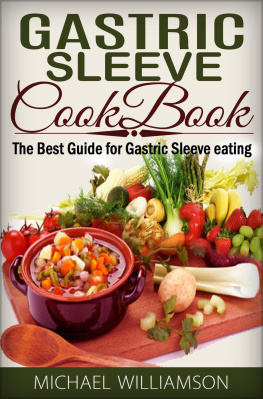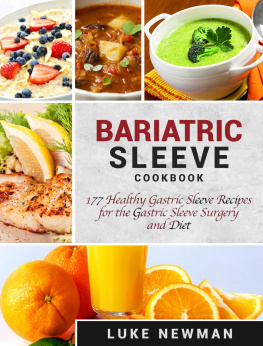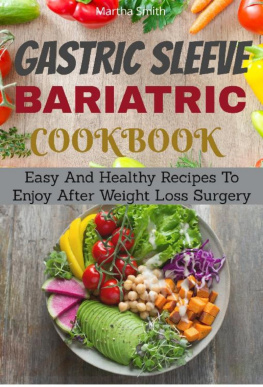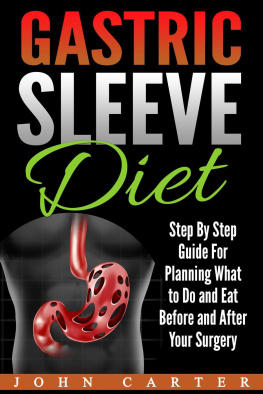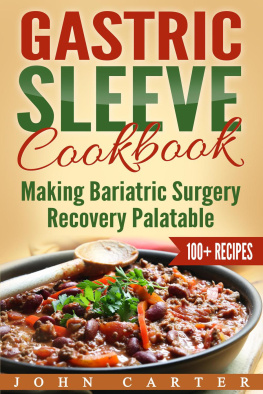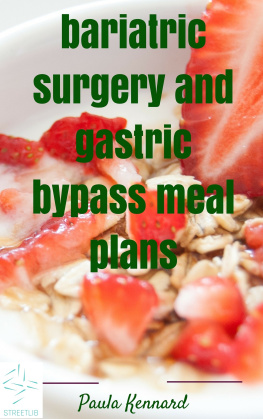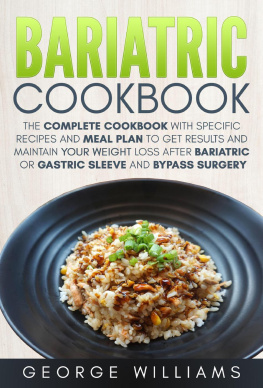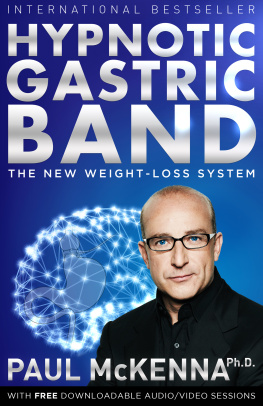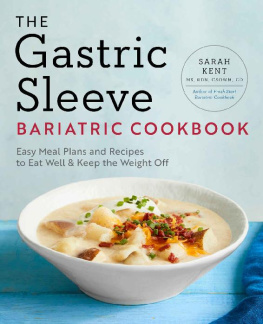Also by Michael Williamson Gastric Sleeve Surgery Cookbook: Safe and Delicious Foods for Gastric Bypass Surgery
Gastric Sleeve Surgery Safe and Delicious Foods for Gastric Bypass Surgery
Table of Contents
C ongratulations on downloading your personal copy of Gastric Sleeve Surgery: Safe and Delicious Foods for Gastric Bypass Surgery . Thank you for doing so. The following chapters will give an overview of the diet required following gastric bypass surgery, and a wealth of recipes for sticking to your new diet. Gastric bypass surgery for weight loss is a viable solution for people who have tried and failed at losing weight in the past. Those who are serious about having the surgery and making the necessary lifestyle changes after surgery will find this book very helpful. There are plenty of books on this subject on the market, thanks again for choosing this one! Every effort was made to ensure it is full of as much useful information as possible.
Please enjoy!
Chapter 1: Basics of the Gastric Bypass Diet
T he decision to have gastric bypass surgery is a major one, and should not be taken lightly. At this point you have probably tried losing weight on your own, and have been unsuccessful. The idea behind this elective surgery is to shrink the stomach so that the amount you can physically eat is limited. When the stomach is smaller, you get full on less food, and it can even become uncomfortable to eat, forcing you to stop. Because a major cause of weight gain and inability to lose weight is excessive portions, this method is very effective. In your search for help, the idea of weight loss surgery has likely come up.
You may have even been through consultations with doctors, surgeons, nutritionists and psychologists in order to get approved for gastric bypass surgery. Before making a decision to have this elective surgery, you should know that there are options, and specific benefits and risks for every type of procedure. Lap band surgery is the most recent development in weight loss technology. This takes the idea of cutting out parts of vital organs and throws it out the window. With lap band surgery, a silicone ring is placed around the stomach, causing a restriction in emptying. This makes you feel full longer, decreasing the amount you feel comfortable eating.
This option is reversible and does not usually cause any issues with nutrient absorption in the gastrointestinal tract. The most common and most approved surgery is gastric bypass. This procedure surgically cuts out part of the stomach, and reroutes the intestines. This is also called Roux-en-Y surgery in the medical community. Removing part of the stomach causes problems with digestion and often leads to a decrease in absorption of important vitamins and minerals the body needs to function. As you may have seen in your research, many people need to take supplements to make sure they meet their requirements of these nutrients.
Since the rate of absorption will never recover, this will be a lifelong requirement. Another common issue resulting from gastric bypass surgery is dumping syndrome, which happens after meals that are too large, or are too concentrated in sugars. This leads to flu-like symptoms, nausea, vomiting, diarrhea and flushing. This usually happens within about fifteen minutes of having a high sugar or high fat meal. The reason this happens is because the sphincter that regulates the entry of food into the intestines from the stomach is often removed during this surgery. When food is funneled through very quickly, the stomach does not have time to digest it fully.
When it hits the intestines, fluids rush in to help digest and flush out the large particles. This flushing causes the symptoms. While some people feel the possibility of this syndrome is a good reminder to stay in check with a proper diet, the symptoms can be debilitating in the moment, and should ultimately be avoided. Gastric sleeve surgery is another invasive technique that removes part of the stomach as well, but does not bypass the stomach opening into the intestines. The benefit of this procedure is that dumping syndrome is much less likely because the sphincter between the stomach and intestines that regulates food emptying into the intestines is still intact. This procedure is usually done in two stages, cutting out parts of the stomach at different times.
Often, people receive the first surgery and realize they dont need an additional resection to meet their weight loss goals. Depending on what type of procedure you choose, the diet will be a bit different. In this book, we will focus on the gastric bypass diet, which requires the greatest level of diet change. Both the lap band and gastric sleeve procedures dont have the nasty dumping syndrome side effect. Because of this, the size of the meal does not need to be restricted. You will feel fuller, and likely uncomfortable from eating too much, but the stomach will be able to handle it.
For reaching weight loss goals, staying within reasonable portions is recommended, but not absolutely necessary every day of the year. These procedures give you the freedom to overindulge from time to time without any acute problems. The diet for gastric bypass surgery is a little more complex. Since dumping syndrome can occur pretty easily, it is necessary to follow a restricted diet. In general, portion size is the biggest factor here. Too much of any food, no matter how healthy will cause you to feel bloated and overfull like with any surgery, but can cause dumping syndrome as well.
It is also recommended that you stay away from concentrated sweets like cake and cookies, as the amount of sugar in these items will cause water to flush into your intestines as promised. No matter what type of procedure you choose to help with your weight loss goals, lifestyle changes will be mandatory. While surgery can help you lose weight, ultimately it will be your ability to eat reasonable portions of healthy, nutrient-rich foods and participate in regular physical activity that will keep your weight in check. Bypass and other procedures can help facilitate the process, but you must be willing to be accountable for your diet decisions for success. Many people believe that having their surgery will be their weight loss solution, and those are the people that lose a little weight initially, but dont reach their goals. If you are ready to get your diet in check, use this book as a guide to kick start a new healthy diet routine.
You will quickly discover how well you begin to feel when you feed your body what it wants and needs. Most recipes and meal ideas in this book will follow the same basic template, and any meals you have should look just about the same. With gastric bypass, your meal pattern is likely to change. Since the stomach can only handle small portions, eating 5-6 small meals a day is ideal. Each small plate should include a few ounces of protein, less than half cup of starchy side like rice or potato, and the rest should be vegetables. Avoid drinking water or other beverages with meals as this will prematurely fill the stomach.

